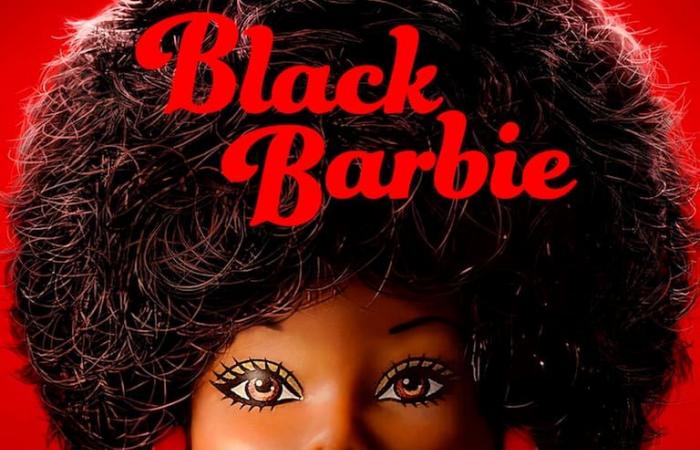
Hear
With blue eyes and blonde hair, the Barbie doll It enchanted millions of girls around the world, although a group of young Afro-descendants asked themselves: “Will I be like this when I grow up?” black barbie (“Black Barbie” in Spanish) celebrates the creation of an underrated toy at Mattel and shows the other side of the company who created the most famous feminine toy in the world.
Shondaland (Bridgerton, Grey’s Anatomy) and Netflix, under the direction of documentary filmmaker Lagueria Davis, release a film about the fight for representation in the Mattel design department, where the different Barbie product lines were created. The documentary is based on the story of Beulah Mae Mitchell, a company employee who was once asked by owner Ruth Handler how to improve her toys. She responded with deep desire, and at the same time, jokingly: “Why don’t we create a black Barbie?”
In Black Barbie, doll designer and diversity consultant Stacey McBride Irby speaks; Mattel’s first Black designer, Kitty Black Perkins; and the renowned initiative manager Beulah Mae Mitchell.
Yes ok black barbie commemorates the creation of the black Barbie in 1968, it is also blunt when talking about representation and the path to creating more dolls for girls of African descent. “There are even many places in America where they banned black dolls from the market. “Women began to make dolls that looked like pillows or cushions,” says Amitis Motevalli, artist and director of the William Grant Still Arts Center art gallery (California) in the documentary.
“In the Caribbean, people started making something called Topsy Turvy dolls, where, on one side, they were a white doll with a long skirt, and then you could turn it around and lower the skirt to have a black doll,” she explains. Motevalli.
On the other hand, black barbie talks about Mattel’s decision to create the first black Barbie as part of a strategy to acquire new audiences, but not with the social objective of representation. The women who are interviewed in the documentary take the initiative to create a different toy as “a revolutionary act” in times of segregation in the United States. In this context and with a certain indifference, Mattel launches the first Afro-descendant doll on the market without much publicity involved.
Producer Shonda Rhimes says that her mother had a collection of Barbies from the first appearance. In the image of her, she is holding the first doll inspired by her image.
The black Barbie had the features of the white Barbie and was so slender that she felt unreal, according to testimonies in the documentary. The women interviewed discuss the lack of promotion of the doll and question her role as a mere companion or friend of the main Barbie. In addition, they talk about the brand’s minimal study of the toy, since the physical representation of an Afro-descendant woman, with prominent lips and a curvy figure, was something indifferent in the design.
black barbie It is the doll in the center of the image. Initially created by designer Kitty Black Perkins, who was hired by Mattel years before.
In 1977 and after a demonstration for the rights of people of African descent in the United States, other child figures appeared on the market. The Shindana Toy brand launches a line of Afro toys, because the owner of the company managed to get Mattel businessmen, Elliot and Ruth Handler, to invest 200 thousand dollars in his doll factory. As well as these efforts, there were several others, continuing with the launch of the so-called ‘Black Barbie’ in 1980.
However, time is ticking and initiatives are applauded as much as they are questioned. There is a discussion about the prominence of black Barbie in Mattel’s animated series, where the main figure is the iconic white doll. In the film, they play an important scene from a television show, where the first asks her friend why she feels discriminated against on the street.
Furthermore, the documentary film carries out a study on children of different ages, cultures, conditions and nationalities with the help of experts in issues of cultural representation. “I am interested in knowing how school contextual factors impact children’s emotions about their blackness,” explains doctor and professor in child and adolescent studies, Amirah Saafir in the documentary.
In one scene, a black girl chooses “the prettiest Barbie” on the table and argued that “she has dark skin, like us,” while an Afro-descendant child selects the white-skinned doll. In this way, questions begin with the little ones to find out what they think about the toys. With a wonderful scene like this, director Lagueria Davis gets it right when explaining issues of representation with a panel of experts.
The movie It has a list of experts on representation issues, interviews with senior Mattel ranks and artists who ask for greater prominence of the Afro doll in every space. It is not a tedious documentary to listen to, as happens in films that abuse history. Rather, the director leaves aside the fact of delving into discrimination or positions contrary to the black Barbie. That shows her bias in her own cultural battle, but ultimately it is her decision to turn the black Barbie, for the first time in film (and streaming), into “the heroine of the story.”
The Peru Commerce)





